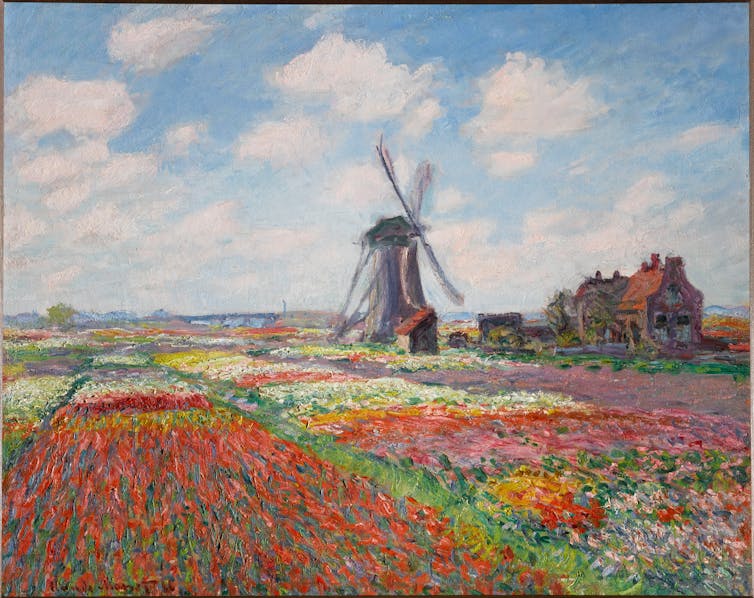Eratosthenes was atypical in being one of the few Ancient Greek scientists who conducted an experiment.
Monthly Archives: March 2018
How Eratosthenes calculated the Earth’s circumference
Filed under Reblogs
Ken White deconstructs the “fire in a crowded theater” canard about free speech
In 2012 at the legal blog Popehat, Ken White, a criminal defense lawyer and free-speech maven, deconstructed the famous phrase uttered by Supreme Court Justice Oliver Wendell Holmes, Jr. in an opinion about “free speech” in wartime. In 1919 there was a series of three Supreme Court decisions against men (socialists, foreigners, and anarchists) who spoke and published pamphlets against America’s participation in World War I—as well as against conscription (the draft). In all three cases, Holmes and the Court upheld the convictions, and each person was sentenced to ten years in prison for producing what today would be considered free speech.
Although White’s post, “Three generations of a hackneyed apologia for censorship are enough“, is a bit long, it’s well worth reading, for it shows how increasing tolerance for speech has evolved, as well as how Holmes’s famous statement has been misused to advocate continuing censorship…
View original post 1,366 more words
Filed under Reblogs
Art Gallery SA goes back to Impressionism’s colourful roots with masterpieces from Musee d’Orsay

Sasha Grishin, Australian National University
In the 1970s, art history was being rewritten by a generation of young scholars, including TJ Clark and a host of other neo-Marxists, who argued that painting was more than just a means of arranging colours on the surface of a canvas for aesthetic purposes. Art, they said, was also a mirror of society and of its political aspirations. By the turn of the century, this view had become the standard way of analysing movements such as Impressionism.
Colours of Impressionism: Masterpieces from the Musée d’Orsay, at the Art Gallery of South Australia, moves away from this model and back towards a more traditional analysis largely based on colour. The exhibition includes more than 65 paintings from the famed Parisian museum curated by two of its staff – Marine Kisiel and Paul Perrin. There have been numerous Musée d’Orsay exhibitions in Australia, at least five, the most notable of these the impressive The Impressionists: Masterpieces from the Musée d’Orsay at the National Gallery of Victoria in 2004.
Read more:
Friday essay: from the Great Wave to Starry Night, how a blue pigment changed the world
Although these exhibitions are an important part of the French gallery’s revenue stream and many are drawn from the back room collection, the selection of work for the Adelaide exhibition is a good one. A number of key pieces have been removed from the walls of Musée d’Orsay’s permanent display and at least 50 of the paintings have never previously been exhibited in Australia.

The exhibition is built around the formalist notion that the development of Impressionism can to some extent be interpreted as a development of colour theory. As the French painter Maurice Denis famously observed in 1890, “Remember that a painting – before being a battle horse, a nude woman, or an anecdote of some sort – is essentially a flat surface covered with colours, put together in a certain order”.
Colours of Impressionism starts with the work of the French realist painter Gustave Courbet who rejected the tinted marble-like surfaces of the French academic tradition and introduced generous amounts of black to his palette. He also played with white snow landscapes articulated with blue shadows.
Read more:
Here’s looking at: Vincent Van Gogh’s Olive grove with two olive pickers
At the time, a number of significant writers published on colour theory (which attempted to define and mix colours), including Johann Wolfgang von Goethe, Michel-Eugène Chevreul, M.E. Brücke and Hermann von Helmholtz, all of which enhanced the science of seeing colour. Colour theories, together with the experience of Japanese prints and the manufacture of pigments in tubes and the production of new chemical colours, were some of the key ingredients for the formalist concerns with colour for the Impressionist painters.

The exhibition, in quite a didactic manner, arranges the paintings in separate rooms examining their relationship to the treatment of colour. Following two rooms of preludes to Impressionism, the core of the exhibition consists of five sections: Painting light; Greens and blues; the Impressionist palette; From Delacroix to Neo-Impressionism and Rose and violet, which could also be called the aftermath of Impressionism.
Here, some painters like Renoir retreated into a classicising museum-like art, while others like Cézanne abstracted the image and sought out a restricted palette. Monet continued to push Impressionism to its logical conclusion, with seas of colour applied to a single object, such as the façade of the Rouen Cathedral caught at different times of day under different conditions of light.

Bequest of Mr and Mrs Raymond Koechlin, 1931, Musée d’Orsay, Paris, France, photo: © RMN-Grand Palais (Musée d’Orsay)/Jean-Gilles Berizzi
The exhibition sparkles with subtle but wonderful associations that create the feeling of comradeship amongst a small band of friends exploring associated concerns in their art. For example, if one examines carefully Auguste Renoir’s portrait of Claude Monet in 1875, the background is Monet’s house and garden at Argenteuil. On the wall next to it is Monet’s painting Un coin d’appartement (A corner of the apartment) 1875, where the same foliage pinpoints the same location.
The May triptych brings together three small canvases, all painted in about 1872, but by three different artists: Alfred Sisley, Camille Pissarro and Monet. It catches a moment in time when the three friends were working on parallel trajectories. The paintings are sketchy, rather than polished, and finished in the academic sense. Colour is applied in small dabs and not in blended colour masses and they are all landscape scenes executed with a palette stretched towards the ultraviolet end of the colour spectrum.
From this early unity of techniques and vision, within a decade or so, the artists moved in their own directions to create distinctive styles. Only Monet continued to adhere to the earlier ideas of Impressionism.

Gift of Ernest May, 1923, Musée d’Orsay, Photo © RMN-Grand Palais (Musée d’Orsay)/René-Gabriel Ojéda and Hervé Lewandowski
How convincing is this attempt to tell the history of the development of Impressionism as part of a history of the development of colour theory? What the exhibition does demonstrate, and what we have always known, is that the Impressionists and Neo-Impressionists were obsessed with light and colour and actively combined empirical observation with a somewhat half-baked understanding of the science of colour perception. They devised techniques for working “en plein air” (working outside) and for working in series to capture the changing conditions of light.
Read more:
Friday essay: When Manet met Degas
Once the artists had mastered the techniques of colour application, they seemed bored to a standstill. Colour was absorbed into their general toolkit and they moved in different directions. Monet, as always, was the odd painter out and continued with his love affair with colour until the end of his life.
The exhibition comes to Adelaide after its initial showing at the National Gallery of Singapore and is being exhibited in the Elder Wing, the 19th Century space in the Adelaide gallery as you enter from North Terrace, which has been refurbished for the exhibition. This exhibition also appears to be the swansong for gallery director Nick Mitzevich before he takes up his new role as director of the National Gallery of Australia in Canberra in June 2018.
![]() Colours of Impressionism: Masterpieces from the Musée d’Orsay is at the Art Gallery of South Australia until July 29 2018
Colours of Impressionism: Masterpieces from the Musée d’Orsay is at the Art Gallery of South Australia until July 29 2018
Sasha Grishin, Adjunct Professor of Art History, Australian National University
This article was originally published on The Conversation. (Reblogged by permission). Read the original article.
Filed under Reblogs
Jon Haidt on the University Paradox
You’ve surely heard of social psychologist Jonathan Haidt by now, as he’s been involved in discussion of morality, university culture, and political correctness for a long time. Previously at the University of Virginia, he’s now Professor of Ethical Leadership at New York University’s Stern School of Business. Although he’s a liberal, he’s been somewhat demonized for criticizing “social justice warriors.” As you’ll see in the lecture, that’s not completely fair, for Haidt, as a liberal, is in favor of just treatment for members of recognized groups, giving them equal opportunities, which is his (and my) definition as social justice.
But in this video, whose YouTube description is below, Haidt explains why universities cannot simultaneously pursue both truth and social justice as their main missions. That, he argues, leads to mission conflict and a lack of coherence. He’s clearly in favor of the former, but because he describes the choices and the two…
View original post 283 more words
Filed under Reblogs
Collected short stories of Somerset Maugham volume two
‘It’s rather a long story. I’m afraid it’s not a very nice one and I find it rather difficult to tell. I’m going to ask you not to interrupt me, or to say anything, till I’ve finished.’
(The Force of Circumstance)
William Somerset Maugham’s collected short stories were published in four volumes by Penguin in 1963, and have gone through various editions with numerous publishers in the 55 years since then (at one stage available from Pan, the four volumes are currently published by Vintage).
This is volume two, which contains 24 stories in 400 closely-printed pages, all told with the leisurely urbanity for which Maugham is renowned, the texts unfurling like the turbid rivers which flow past the planter’s bungalows in his tales of the Far East.
She was sitting on the veranda waiting for her husband to come in for luncheon. The Malay boy had drawn…
View original post 7,885 more words
Filed under Reblogs
Meeting Jeremy Bentham
 Jeremy Bentham’s auto-icon, photo by the Author
Jeremy Bentham’s auto-icon, photo by the Author
I am not a Utilitarian, when it comes to moral philosophy. And I am not into celebrities. Nevertheless, I was looking forward to “meet” Jeremy Bentham, the father of Utilitarianism, who is currently in visit at the Met-Breuer museum in New York City. To be precise, of course, it is Bentham’s famous “auto-icon” that is visiting, as part of the fascinating “Like Life: Sculpture, Color, and the Body” exhibit, which has just opened and will go on until July 22nd.
The auto-icon is made of the preserved remains of Bentham, dressed with his own clothes and sporting his favorite cane, which he nicknamed “Dapple.” The head is actually a very realistic wax replica based on portraits from the time, as the actual one did not fare well during the chemical process that Bentham instructed his friend and physician Thomas Southwood Smith…
View original post 1,228 more words
Filed under Reblogs
Privilege
These posters are part of an official initiative at the University of Ontario, the RISE initiative. I checked all the boxes save two (I’m not a Canadian citizen or a Christian, and “able-bodied” mentally is questionable).
For some reason this bothered me. And then I realized that it’s because this kind of stuff is turning college into a place where you’re supposed to adopt a given set of social attitudes and ideology, not where you adjudicate ideas and decide how to behave. In other words, it’s propagandizing students, not exposing them to different ideas and received knowledge and allowing them to forge their own path.
Is that okay? I am sympathetic to the goals of such a program, of course, but something rankles when it’s forced down your throat. And perhaps the RISE workshops aren’t mandatory for all students, but these are sanctioned by the University, as are these…
View original post 31 more words
Filed under Reblogs
You’re paying too much for electricity, but here’s what the states can do about it
Kate Griffiths, Grattan Institute
State-owned power networks have spent up to A$20 billion more than was needed on the electricity grid, and households and businesses in New South Wales, Queensland and Tasmania are paying for it in sky-high power bills.
A new Grattan Institute report, Down to the Wire, shows that electricity customers in these states would be paying A$100-A$400 less each year if the overspend had not happened.
The problem is that state governments, worried about blackouts and growing demand for electricity, encouraged the networks to spend more in the mid-2000s. But the networks overdid it, and now consumers are paying for a grid that is underused, overvalued, or both.
Read more:
Comparing Australia’s electricity charges to other countries shows why competition isn’t working
Why we built too much
The grid includes high-voltage transmission lines that carry electricity over large distances, as well as low-voltage poles and wires that connect to homes and businesses. Networks are built to cope with those times of highest demand for electricity. Yet the growth in the value of network assets has far exceeded growth in customer numbers, total demand, or even peak demand.
Demand for electricity did grow rapidly in the early 2000s, but since then it has slowed substantially as more and more households have installed solar panels, and appliances have become more energy efficient. Networks may have overbuilt because they expected that demand would continue to grow.
https://datawrapper.dwcdn.net/DLpm4/4/
Yet the overbuilding has occurred almost exclusively in the public networks. Why would government ownership lead to such high costs?
There are two main reasons. First, investment in electricity networks boosts state government revenues because public networks pay a fee to the state to neutralise their lower borrowing costs (as well as the dividend they pay to the state as the owner). Second, a government-owned business might come under political pressure to prioritise goals such as reliability or job creation over cost.
https://datawrapper.dwcdn.net/skUw0/1/
Of course governments worry about reliability – they cop the blame if anything goes wrong. In 2005, the NSW and Queensland governments required their network businesses to build excessive back-up infrastructure to protect against even the most unlikely events. Reliability did improve a bit in some networks, but at significant cost: on average, customers got an extra 45 minutes of electricity a year at a cost of A$270 each.
State governments should take responsibility
Successive state governments in NSW, Queensland and Tasmania are responsible for overinvesting in their networks and, in NSW and Queensland, for setting reliability standards too high.
State governments can’t turn back the clock but they can still fix the mistakes of the past. And they should, because if they don’t, consumers will be paying for decades to come.
Households and businesses that can afford to buy solar panels and batteries will reduce their reliance on the grid. Meanwhile, those left behind – including the most vulnerable Australians – will be stuck with the burden of paying for the grid.
Read more:
Energy prices are high because consumers are paying for useless, profit-boosting infrastructure
In Down to the Wire we recommend that where network businesses are still in government hands, the government should write down the value of the assets. This would mean governments forgoing future revenue in favour of lower electricity bills. For recently privatised businesses in NSW, a write-down could create more issues than it solves, so in those cases the state government should refund consumers the difference through a rebate.
At a time when governments are concerned about energy affordability, NSW, Queensland and Tasmania have a real opportunity to do something about it. They should seize it.
How to prevent this happening again
There will always be pressure to spend more. At the moment, concerns about South Australia’s reliability could very well lead to further investment in network infrastructure.
Policymakers must also deal with the risk that, in future, parts of the network may no longer be needed. The grid may need to be reconfigured as new technologies emerge, some communities go off-grid, and new energy sources arise in new locations.
For now, consumers bear this risk: they are locked into paying for assets whether or not they are needed. In future, the risk should be shared between consumers and businesses; this would encourage businesses to avoid overbuilding in the first place and instead consider alternative solutions.
With the focus on reliability right now, governments are at risk of repeating mistakes of the past. The truth is that Australia already has a very reliable grid.
On average across the National Electricity Market, consumers experience less than two-and-a-half hours in unplanned outages per year. Reducing that by a few minutes of supply each year is very expensive. Politicians typically value reliability more than consumers, but ultimately it is consumers who foot the bill.
Read more:
Tesla’s ‘virtual power plant’ might be second-best to real people power
![]() State governments now have an opportunity to reset the clock – to pay off the mistakes of the past and let consumers guide choices about our future grid.
State governments now have an opportunity to reset the clock – to pay off the mistakes of the past and let consumers guide choices about our future grid.
Kate Griffiths, Senior Associate, Grattan Institute
This article was originally published on The Conversation. (Reblogged by permission). Read the original article.
Filed under Reblogs

